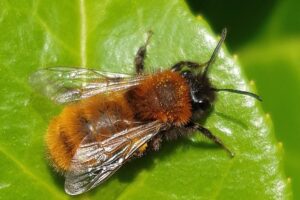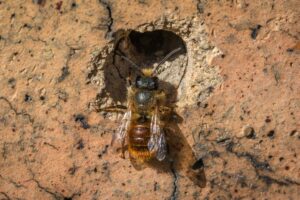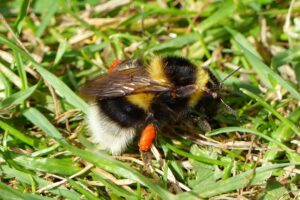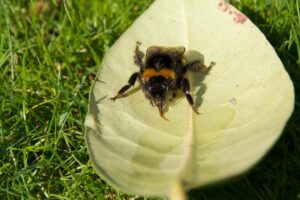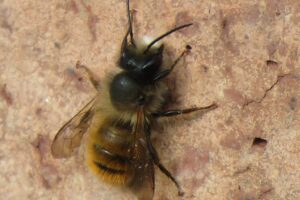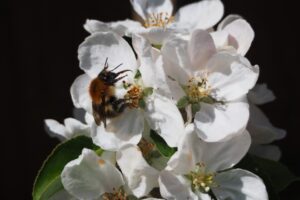A huge ‘thank you’ to everyone who has taken part in the North East Bee Hunt so far. Your records are helping boost our knowledge of bees in the North East and will help inform their conservation in the future.
In the next North East Bee Hunt update, Charlotte Rankin summarises the first month of project, highlighting your records and photography from the past few weeks.
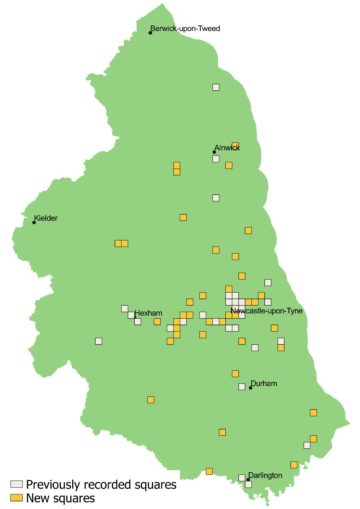 A fantastic total of 293 bee records from 73 recorders have been submitted to The North East Bee Hunt so far. This is an incredible effort by participants across the region from all three vice-counties. After receiving our first sighting of the Ashy Mining Bee since the last update, all five target bee species are now being sighted in the region. To help you identify these target species, don’t forget that we have a handy online identification guide. The Bee Hunt welcomes all wild bee sightings and a total of 17 bee species have been submitted so far, including 9 solitary bee species and 8 bumblebee species. A collection of the sighted bee species can be viewed at the bottom of the page.
A fantastic total of 293 bee records from 73 recorders have been submitted to The North East Bee Hunt so far. This is an incredible effort by participants across the region from all three vice-counties. After receiving our first sighting of the Ashy Mining Bee since the last update, all five target bee species are now being sighted in the region. To help you identify these target species, don’t forget that we have a handy online identification guide. The Bee Hunt welcomes all wild bee sightings and a total of 17 bee species have been submitted so far, including 9 solitary bee species and 8 bumblebee species. A collection of the sighted bee species can be viewed at the bottom of the page.
The most recorded species so far are the Tree Bumblebee, Red-tailed Bumblebee and the Tawny Mining Bee, and records are now starting to pick up for the Red Mason Bee. So far, only male Red Mason Bees have been sighted but do look out for the females inspecting your garden bee hotels or plants! Queen bumblebees are out in force and have been spotted busily searching for nest sites. If you have spotted queens with pollen loads, this is a sure sign that queens have found a suitable place to nest and are starting to lay and provision their eggs. Over the next few weeks, a greater number of bumblebees will be seen on the wing as the first of the worker bumblebees emerge.
The North East Bee Hunt has also received sightings of spring-flying Mining Bees, including Buffish Mining Bees and Chocolate Mining Bees. These species are similar but can be identified by looking out for their key features. To help you identify these bees, their key features have been summarised in a short blog post. Like other mining bees, the females can be found digging into the earth to build their own nest burrows and are often found nesting close together in aggregations. These two mining bees can be found visiting your gardens, so do keep a lookout!
The map shows the distribution of bee records submitted to The North East Bee Hunt so far. The yellow squares show new squares submitted to the Bee Hunt since the last update and highlights a great increase in the spread of records. By putting bees on the map, you are helping to build up a better picture of their distributions in the region. By mapping and monitoring bees in the region, we can help to protect and conserve them.
Please do continue to send in your bee sightings to the North East Bee Hunt and all the information on how can be found on The North East Bee Hunt webpage. If you have spotted bees and are unsure of their identification, please do follow the Facebook thread and share your bee images for help from the friendly Bee Team.
Charlotte Rankin, Local Naturalist
